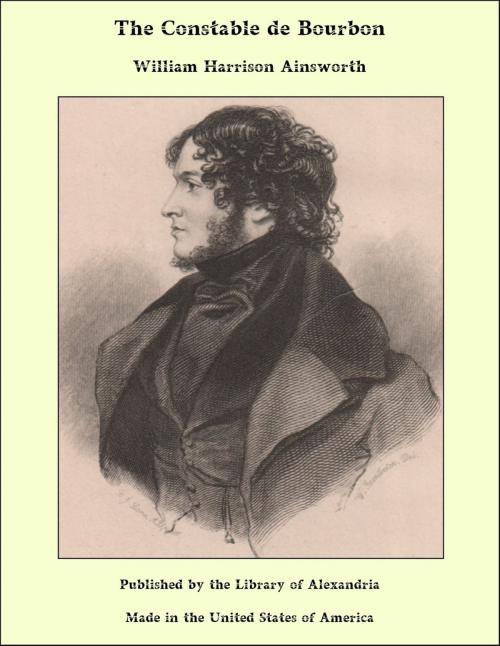The Constable de Bourbon
Nonfiction, Religion & Spirituality, New Age, History, Fiction & Literature| Author: | William Harrison Ainsworth | ISBN: | 9781465603920 |
| Publisher: | Library of Alexandria | Publication: | March 8, 2015 |
| Imprint: | Language: | English |
| Author: | William Harrison Ainsworth |
| ISBN: | 9781465603920 |
| Publisher: | Library of Alexandria |
| Publication: | March 8, 2015 |
| Imprint: | |
| Language: | English |
On a fine day, in the early part of June, 1523, a splendid cavalcade, consisting of three hundred well-mounted gentlemen, habited in velvet, and each having a massive gold chain round his neck, entered the Forest of Fontainebleau from the side of Nemours, and proceeded along an avenue bordered by noble trees towards the palace. For the most part, the persons composing this brilliant troop were young and handsome cavaliers, whose looks and haughty bearing proclaimed their high birth, but there were some veterans among them, whose bronzed visages and martial deportment showed that they had served in many a hard campaign. But all were equally richly attired in the sumptuous livery of their leader—black velvet embroidered with gold—and their pourpoints and the housings of their steeds bore a princely badge, woven in gold, together with a sword wrought in the same material, which denoted that their lord held the office of Constable, one of the highest military dignities of France. The leader of the troop, a very striking personage, whom it was impossible to regard without interest, was a man of large stature, with handsome, strongly-marked features, very stern in expression. An ample chest and muscular throat indicated the possession of great personal strength, but his frame, though stalwart, was admirably proportioned, and it was easy to discern, from the manner in which he bestrode his steed—a powerful block charger—that he was a consummate horseman. His looks and deportment were those of one accustomed to command. If not absolutely young, he was in the very prime of life, being just thirty-three. His complexion was swarthy, his eyes dark and piercing, and his beard, which he wore exceedingly long, black as jet. His firm-set mouth betokened inflexible resolution, while his towering forehead indicated great sagacity. Though he was magnificently arrayed, his bearing showed that he was not one of the silken gallants who thronged the gay and chivalrous court of François I., and who delighted in the banquet, the masquerade, or the tournay—but a hardy warrior, who had displayed prowess in the field, and could lead hosts to conquest.
On a fine day, in the early part of June, 1523, a splendid cavalcade, consisting of three hundred well-mounted gentlemen, habited in velvet, and each having a massive gold chain round his neck, entered the Forest of Fontainebleau from the side of Nemours, and proceeded along an avenue bordered by noble trees towards the palace. For the most part, the persons composing this brilliant troop were young and handsome cavaliers, whose looks and haughty bearing proclaimed their high birth, but there were some veterans among them, whose bronzed visages and martial deportment showed that they had served in many a hard campaign. But all were equally richly attired in the sumptuous livery of their leader—black velvet embroidered with gold—and their pourpoints and the housings of their steeds bore a princely badge, woven in gold, together with a sword wrought in the same material, which denoted that their lord held the office of Constable, one of the highest military dignities of France. The leader of the troop, a very striking personage, whom it was impossible to regard without interest, was a man of large stature, with handsome, strongly-marked features, very stern in expression. An ample chest and muscular throat indicated the possession of great personal strength, but his frame, though stalwart, was admirably proportioned, and it was easy to discern, from the manner in which he bestrode his steed—a powerful block charger—that he was a consummate horseman. His looks and deportment were those of one accustomed to command. If not absolutely young, he was in the very prime of life, being just thirty-three. His complexion was swarthy, his eyes dark and piercing, and his beard, which he wore exceedingly long, black as jet. His firm-set mouth betokened inflexible resolution, while his towering forehead indicated great sagacity. Though he was magnificently arrayed, his bearing showed that he was not one of the silken gallants who thronged the gay and chivalrous court of François I., and who delighted in the banquet, the masquerade, or the tournay—but a hardy warrior, who had displayed prowess in the field, and could lead hosts to conquest.















